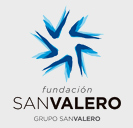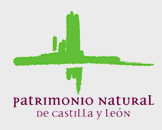Action Plans are strategies of implementation of green ICT policies in each of the organizations that form the project consortium. These action plans take into account measures like virtualization, the cut of personal printers at the workplace, the replacement of monitors (screens), the implementation of a copy and printer control software, the switch off of computers after working hours, etc. A short methodological guidelines document encourages other organizations to introduce green ICT strategies and it explains how to do it. See “results” or “documents” sections of this website. http://www.lifegreentic.eu/en/results
Under this action, Natural Heritage Foundation of Castilla y Leon has virtualized the Data Centre through the elimination of more than 11 conventional servers and the implementation of 4 virtualized servers + 1 backup server. Furthermore, 30 desktops have been virtualized through the elimination of CPU and monitors (screens) and its replacement by thin client “all-in-one”. At workplaces where it was a need to maintain dual monitors or larger monitors thin client “box” has been chosen. See “results” or “documents” sections of this website. http://www.lifegreentic.eu/en/results
The project of the virtual campus of San Valero included different measures aimed at the carrying out of digitally administrative formalities between the university and students, including notes and administrative management, with significant saving of paper as well the reduction of the number of trips. At the same time, online academic training has been fostered. Finally, a copy and printer control software (paper-cut), that has contributed to reduce the consumption of paper was introduced See “results” or “documents” sections of this website. http://www.lifegreentic.eu/en/results
The main purpose of this action was to develop a “smart” street with a LED technology. In order to control the lighting, sensors will be located to measure parameters of air quality and noise. These sensors are online managed. See “results” or “documents” sections of this website. http://www.lifegreentic.eu/en/results
This Action was aimed to carry out a guidelines document that contributes to issue green procurement standards and criteria that may be applied to different ICT equipment and devices. The guidelines document may be downloaded in the “documents” section of this website. At the same time, sample documents will be implemented for public institutions in order to purchase green procurement. See “results” or “documents” sections of this website. http://www.lifegreentic.eu/en/results
The objective of this action was to develop a guide or a manual with advices for ICT users in order to reduce energy consumption of computers, smartphones, tablets, printers, etc. as well as to reduce the use of information, files and emails. The guidelines document may be downloaded in the section “documents” of this website. See “results” or “documents” sections of this website. http://www.lifegreentic.eu/en/results
The laboratory was a platform to share knowledge and ideas in order to spread and apply Green ICT criteria, to both citizens and companies, public or private. In order to do so, a blog “Mi Huellla Tic,” a Facebook profile and a Twitter account are available. On the blog, a database on the aspects that have been successful in different entities is available. These aspects include the implementation of projects or solutions that help to reduce ICT carbon footprint and/or the use of ICT for environmental sustainability and the fight against the climate change.
In the framework of this laboratory, young students and enterprising have developed different ideas and projects to boost Green ICT.
See “results” or “documents” sections of this website. http://www.lifegreentic.eu/en/results




